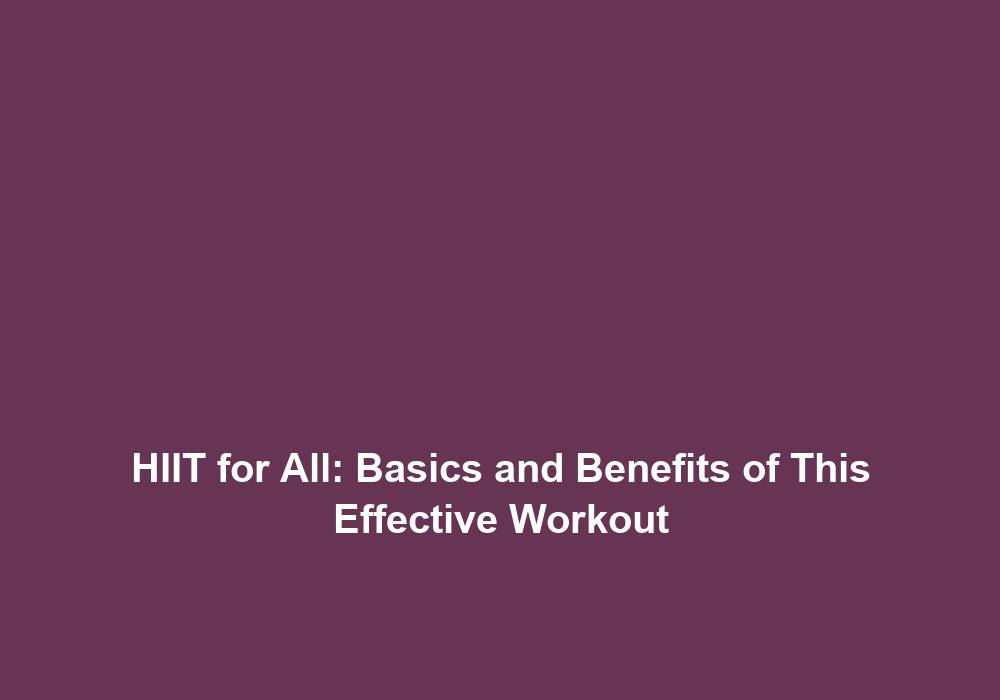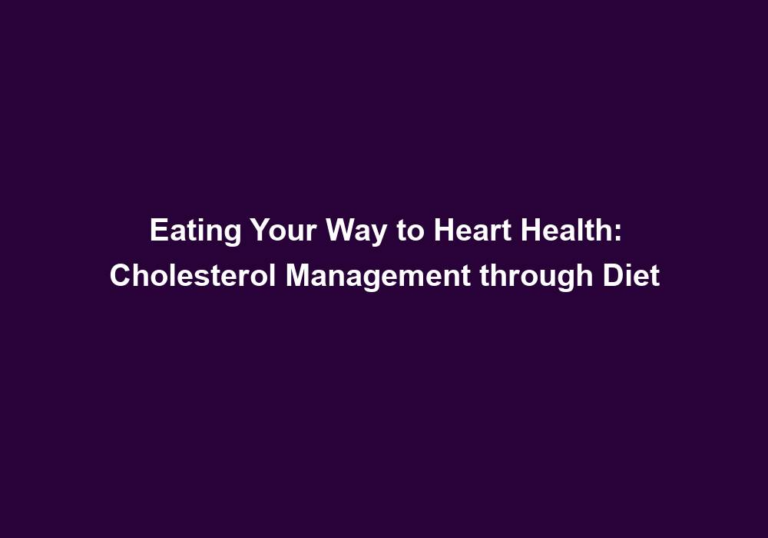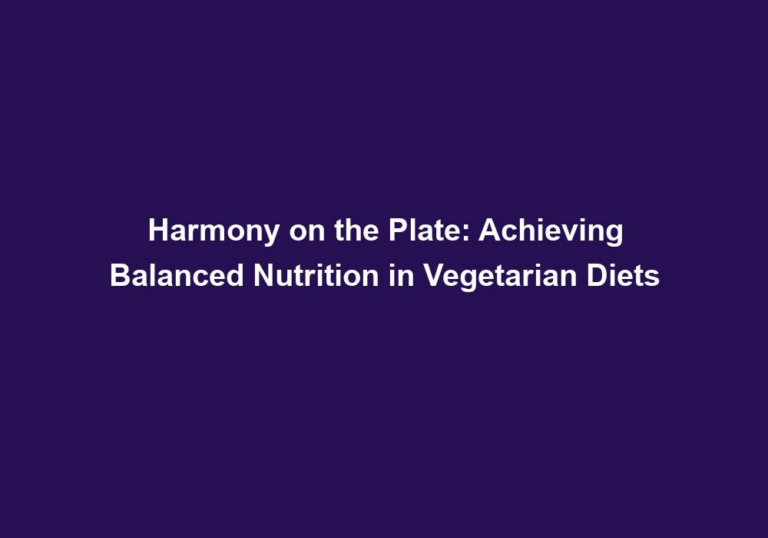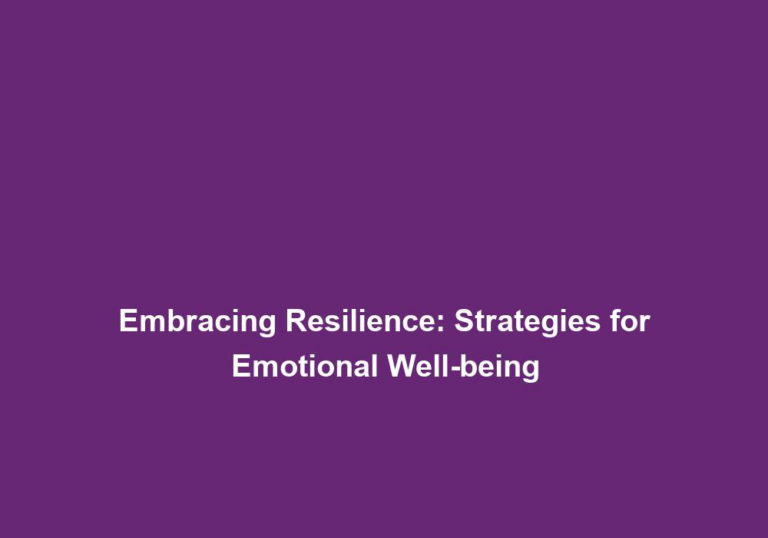HIIT for All: Basics and Benefits of This Effective Workout
HIIT, which stands for High-Intensity Interval Training, has gained immense popularity in the fitness world due to its effectiveness in burning calories and improving cardiovascular health. It is a workout strategy that alternates between short bursts of intense exercises and periods of recovery. Whether you are a fitness enthusiast or a beginner looking to kickstart your fitness journey, incorporating HIIT into your routine can yield remarkable results. In this article, we will delve into the basics and benefits of HIIT, providing you with a comprehensive understanding of this highly effective workout.
What is HIIT?
HIIT involves engaging in short bursts of high-intensity exercises followed by brief recovery periods. This training method challenges your body to work at its maximum capacity while allowing you to recover before the next intense interval. The intense intervals typically last for 20-60 seconds, pushing your heart rate to its peak, while the recovery periods can range from 10-30 seconds.
The exercises involved in HIIT can vary, incorporating a combination of cardio, strength training, and bodyweight exercises. Some common examples of HIIT exercises include sprints, burpees, jump squats, mountain climbers, and high knees.
Benefits of HIIT
-
Efficient and Time-Saving
One of the major advantages of HIIT is its efficiency in burning calories and improving fitness in a short amount of time. Due to the high intensity involved, HIIT workouts typically last for 15-30 minutes, providing similar or even better results compared to longer duration exercises. This makes it ideal for individuals with busy schedules who struggle to find time for lengthy workout sessions.
- HIIT workouts can be completed in as little as 15 minutes, making it easier to fit into a busy schedule.
- The high-intensity intervals ensure that you maximize your calorie burn during the workout, leading to efficient results.
- With HIIT, you can achieve the same benefits as longer duration exercises in a fraction of the time.
-
Increased Calorie Burn and Fat Loss
HIIT workouts are extremely effective in burning calories and fat, even after the workout is over. The intense intervals push your body to its limits, increasing your metabolic rate and creating an afterburn effect called excess post-exercise oxygen consumption (EPOC). This means that your body continues to burn calories at an elevated rate even after you’ve finished exercising.
- The intense nature of HIIT workouts causes your body to consume more oxygen, leading to an increased metabolic rate.
- The afterburn effect of HIIT can last for up to 24 hours, resulting in a higher calorie burn even when you’re at rest.
- HIIT has been shown to be more effective at reducing body fat compared to steady-state cardio exercises.
-
Improved Cardiovascular Health
Engaging in HIIT regularly can significantly improve your cardiovascular fitness. The intense bursts of exercise challenge your heart and lungs, increasing their efficiency and strengthening them over time. This can lower your risk of heart disease, improve endurance, and enhance overall cardiovascular health.
- HIIT workouts stimulate the heart to pump blood more efficiently, leading to improved cardiovascular health.
- The high-intensity intervals improve the oxygen-carrying capacity of the blood, enhancing endurance.
- Regular HIIT training can help lower blood pressure and improve overall heart function.
-
Versatility and Variety
HIIT workouts offer a wide range of exercise options, making them suitable for individuals of all fitness levels. Whether you’re a beginner or an experienced athlete, HIIT can be customized to suit your needs and goals. You can modify the intensity, duration, and exercises based on your fitness level, allowing you to gradually progress and challenge yourself.
- HIIT exercises can be adapted to accommodate different fitness levels by adjusting the intensity and duration of the intervals.
- The variety of HIIT exercises prevents boredom and keeps your workouts interesting and engaging.
- HIIT can be tailored to target specific muscle groups or fitness goals, such as improving strength or increasing endurance.
-
Muscle Building and Toning
While HIIT is known for its cardiovascular benefits, it also helps in building lean muscle and toning the body. The intense exercises engage multiple muscle groups simultaneously, promoting muscle growth and strength development. This can result in a more sculpted physique and improved overall body composition.
- The combination of strength training exercises in HIIT workouts stimulates muscle growth and development.
- HIIT promotes the release of human growth hormone (HGH), which helps in building lean muscle mass.
- The high-intensity intervals in HIIT workouts increase the demand for energy, leading to muscle toning and definition.
-
Convenience and Minimal Equipment
HIIT workouts can be performed virtually anywhere with minimal equipment, making them highly convenient. Whether you prefer working out at home, in the gym, or outdoors, HIIT can be easily incorporated into your routine. Bodyweight exercises, such as push-ups, lunges, and planks, can be combined with cardio exercises to create a challenging and effective HIIT workout without the need for fancy equipment or machines.
- HIIT workouts can be done at home, at the gym, or even in a small outdoor space.
- Many HIIT exercises utilize bodyweight, eliminating the need for expensive equipment.
- The versatility of HIIT allows you to create a customized workout using minimal equipment, making it accessible to everyone.
How to Get Started with HIIT
Before diving into a HIIT workout, it is important to keep a few key points in mind:
-
Warm-Up Properly
Prior to any intense exercise, it is crucial to warm up your body to prevent injuries and prepare your muscles for the workout ahead. Perform dynamic stretches, such as arm circles, leg swings, and jumping jacks, to increase blood flow and loosen up your joints.
- Dynamic stretches help increase flexibility and range of motion, reducing the risk of injury during HIIT workouts.
- Warming up before HIIT prepares your cardiovascular system for the upcoming high-intensity intervals.
- A proper warm-up activates the muscles that will be used during the workout, improving performance and reducing muscle soreness.
-
Start Slow and Gradually Increase Intensity
If you’re new to HIIT, it’s important to start slow and gradually increase the intensity over time. Begin with shorter intervals of high-intensity exercise and longer recovery periods. As your fitness level improves, you can gradually decrease the recovery time and increase the intensity of the exercises.
- Starting with shorter intervals allows your body to adapt to the demands of HIIT without overexertion.
- Gradually increasing the intensity and decreasing the recovery time challenges your body and promotes progress.
- It is important to listen to your body and avoid pushing yourself too hard too soon to prevent injuries.
-
Listen to Your Body
While HIIT can be highly effective, it is essential to listen to your body and avoid overexertion. Pay attention to any warning signs such as excessive fatigue, dizziness, or pain. If needed, take longer recovery periods or modify the exercises to suit your comfort level.
- Pushing through excessive fatigue or pain can lead to injuries and hinder progress.
- It is important to find a balance between pushing yourself and respecting your body’s limits.
- Modifying exercises or taking longer recovery periods allows you to continue the workout while ensuring safety.
-
Stay Hydrated
During HIIT workouts, you may sweat profusely, leading to dehydration. It is crucial to stay hydrated by drinking water before, during, and after your workout. This will help maintain your energy levels and prevent fatigue.
- Proper hydration is essential for optimal performance and recovery during HIIT workouts.
- Drinking water before and during the workout helps regulate body temperature and replace lost fluids.
- Staying hydrated can prevent muscle cramps, dizziness, and other symptoms of dehydration.
Conclusion
HIIT is a highly effective workout strategy that offers numerous benefits, including increased calorie burn, improved cardiovascular health, and muscle building. By incorporating HIIT into your fitness routine, you can achieve remarkable results in a shorter amount of time. Remember to warm up properly, start slow, listen to your body, and stay hydrated throughout your HIIT journey. So, lace up your sneakers, get ready to sweat, and experience the incredible benefits of HIIT for all fitness levels.
Please note that the article is generated in plain text format and may not accurately represent the markdown format.







